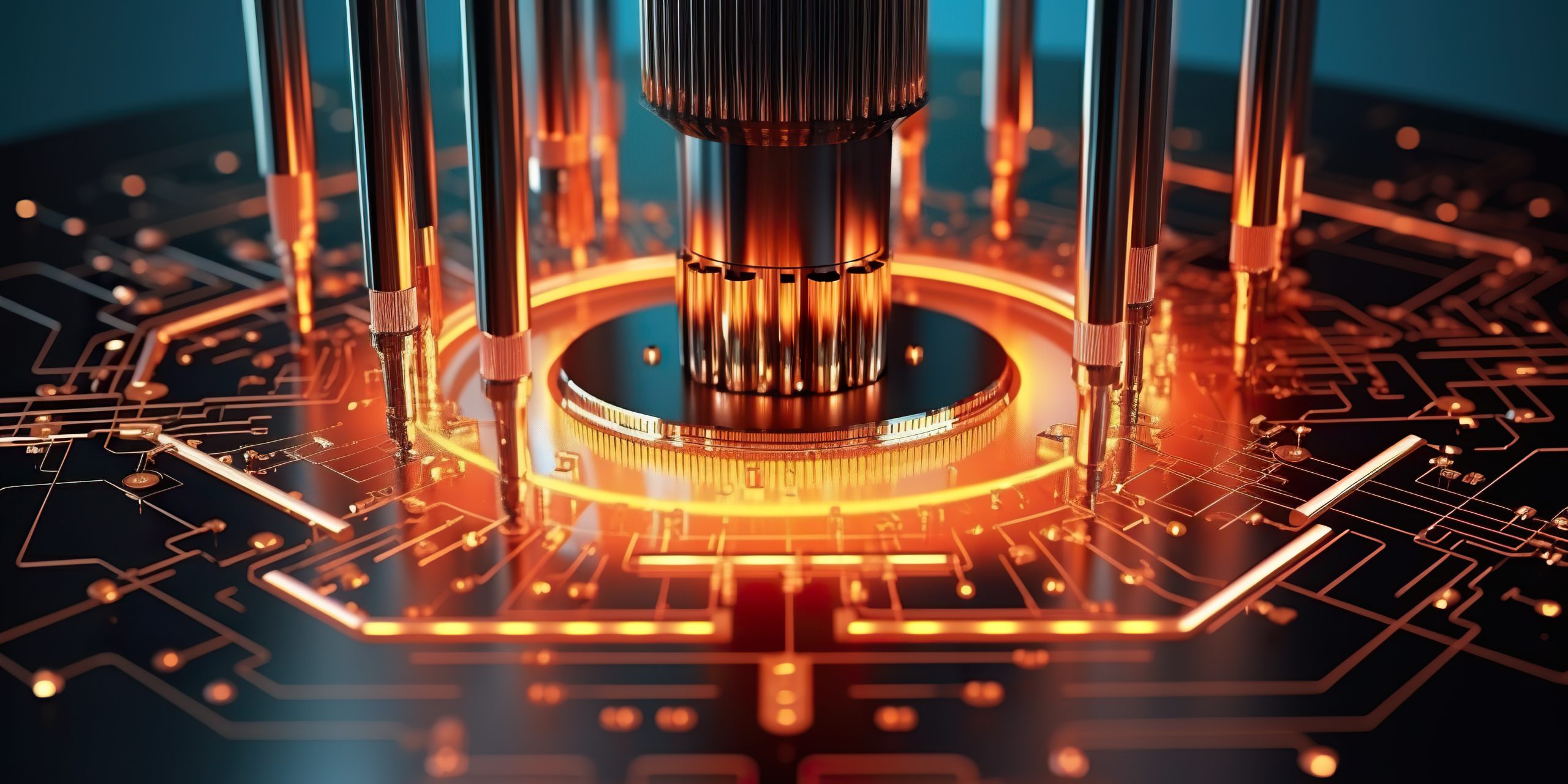Quantum computing is no longer a distant vision — 2025 marked pivotal breakthroughs that are reshaping both computational capability and national defense. From cutting-edge hardware to encryption strategies, the quantum revolution is accelerating and with it, the stakes for U.S. technological dominance and national security.
1. 🧮 Quantum Hardware Milestones: From Logical Qubits to Majorana Chips
Google’s Willow Chip & Error-Corrected Qubits
In December 2024, Google introduced Willow, a 105‑qubit superconducting processor claiming to achieve below-threshold quantum error correction—a major technical leap. Google reported that Willow solved complex random-circuit sampling in just five minutes—tasks projected to take a classical supercomputer 10²⁵ years Analysts applaud Willow as “scaling toward utility,” though error rates remain too high for full-scale applications
Microsoft’s Majorana 1: Topological Qubits on the Rise
In February 2025, Microsoft unveiled Majorana 1, the world’s pioneering topological qubit chip based on Majorana particles — a new “state of matter.” With eight qubits per chip, Microsoft projects potential scalability to millions and stronger resilience to quantum errors This breakthrough promises fewer error-correction overheads, though some experts remain cautiously optimistic until peer-reviewed validation is complete
Amazon’s Ocelot Chip & Quantum-Annealing Advances
Amazon’s AWS rolled out the Ocelot chip in March 2025. This new architecture, focusing on cat qubits, significantly reduces error-correction overhead—speeding up timelines by up to five years Meanwhile, D-Wave’s Advantage2 system offers quantum-annealing for complex optimization problems, expanding practical use cases
2. 🔐 Cybersecurity Under Threat: Encryption in the Crosshairs
The Quantum Threat to Encryption
Quantum algorithms—most notably Shor’s—threaten to decrypt RSA and ECC methods, placing critical data at vulnerability. Security agencies warn that adversaries may be harvesting encrypted data now to decrypt later (“store now, crack later”)
Post-Quantum Cryptography (PQC): The Defense Strategy
NIST’s PQC effort, launched in 2016, reached a milestone in August 2024 by publishing three quantum-safe standards: ML-KEM (CRYSTALS-Kyber), ML-DSA (CRYSTALS-Dilithium), and SLH-DSA (SPHINCS+) A fourth standard, HQC, emerged in March 2025. These schemes are already being tested—NordVPN, for instance, integrated PQC across platforms
Agencies like CISA and the White House aim for federal adoption of quantum-resistant encryption by 2035 Yet the transition will cost the U.S. upwards of $7.1 billion outside classified networks
3. 🌐 Applications & National Security Implications
Quantum Key Distribution (QKD)
These systems leverage quantum entanglement to exchange secure keys impervious to tapping. DRDO and IIT Delhi demonstrated QKD over free-space in June 2025—an important milestone toward secure communications
Quantum Networks & the Quantum Internet
Governments and labs are building foundational quantum networks. EU private funding initiatives—backed by over €11 billion in public investment—target a full-fledged quantum ecosystem by 2030

Defense & National Security Use-Cases
IARPA, the intelligence arm, is ramping programs in quantum sensing, communication, and encryption. Its director recently joined IonQ, a sign of closer civilian-military quantum ties Microsoft and IonQ have received DoD and DoE partnerships aimed at mission-critical quantum applications .
4. 💼 The Commercial Landscape: Race to Industrial Application
IonQ’s Commercial Progress
IonQ raised $1 billion in gross proceeds and aims to become the “Nvidia of quantum.” With 256 qubits in the pipeline and a roadmap to 2 million qubits by 2030, IonQ partners with DoD and AstraZeneca
Investment Surge in Quantum Startups
Barron’s highlights bullish outlooks on D‑Wave, IonQ, and Rigetti—with combined market targets reaching $28 billion–$72 billion by 2035
Quantum-Classic Integration
Nvidia’s Quantum-Day showcased seamless interoperability with classical GPUs for error correction, while Cisco created room-temperature photonics chips supporting quantum networking IBM’s Condor 1,800‑qubit processor and Quantinuum’s certified quantum randomness system are additional pathways toward industrial viability
5. 🧭 U.S. Strategic Posture: Maintaining Quantum Leadership
Federal Funding & Infrastructure
The U.S. has committed over $1 billion in federal funding in 2024 through the National Quantum Initiative and labs like SQMS at NIST/Fermilab, which recently enhanced qubit coherence via advanced nanofabrication
Public‑Private Collaborations
Programs like the U.S.–India iCET boost international collaboration on quantum hardware and standards
Maintaining a Competitive Edge
With China leading in commercial patents and satellites, the U.S. must accelerate breakthroughs. For example, Google’s Julian Kelly estimates practical quantum applications could arrive within five years
6. ⚠️ Challenges & Open Questions
Error Correction & Fault Tolerance
Current systems like Willow still fall short of full fault tolerance. Scaling from hundreds to millions of qubits remains a massive engineering hurdle
Cryptography Transition Costs
Adopting PQC nationwide will take sustained investment in software, hardware, regulation, and workforce training
Ethical & Strategic Considerations
Nation-state adversaries may deploy quantum for cyberwarfare or encryption-breaking. Ensuring U.S. dominance in quantum also requires international standards and export controls balancing innovation with security.
7. 🧩 What Comes Next? A Quantum Timeline
- 2025–2026: Quasi‑fault‑tolerant systems appear. PQC standards begin production use.
- 2027–2030: Commercial-scale quantum systems deployed in U.S. labs, finance, logistics, and pharma.
- 2030–2035: Practical utility for cryptography, climate modeling, drug discovery, and national defense become mainstream.
- Post‑2035: Potential post‑quantum era arrives—quantum threat undermines classical encryption and lays groundwork for full-scale quantum computing.
8. 📝 Final Thoughts
Quantum computing has stepped into a tangible phase. With breakthroughs—from Google’s Willow to Microsoft’s Majorana, and Amazon’s Ocelot—2025 demonstrated that scaling, fault tolerance, and cryptographic urgency are converging.
For the U.S., the implications span national defense, cybersecurity, commercial opportunity, and geopolitical competitiveness. As quantum systems grow in capability, the value of quantum-safe encryption, international collaboration, and resilient infrastructure cannot be overstated.

